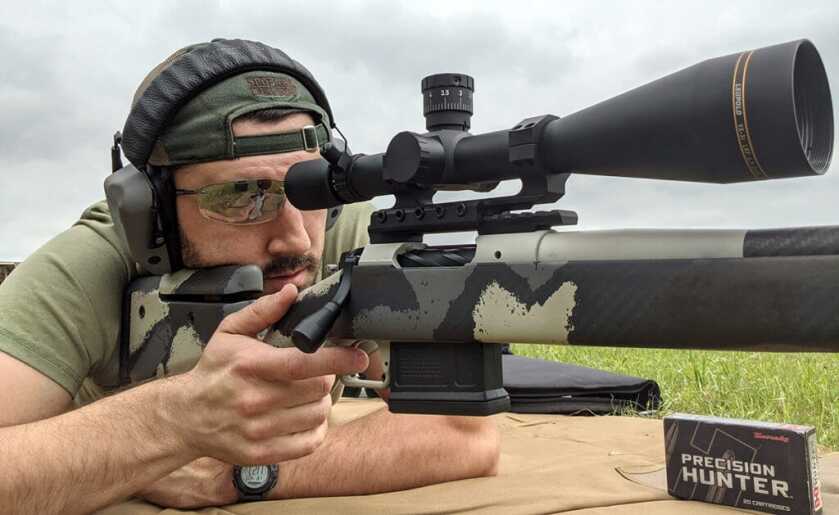
Whenever a big-name gun company jumps into a new category of firearms, it’s a pretty big deal.
Springfield Armory has built its reputation on semi-auto handguns and rifles like the M1A, the Saint line of AR-type rifles, and the Hellcat subcompact handgun. They manufacture great 1911s, but their brand tends to be geared in a tactical direction.
That’s why the industry sat up and took notice last year when the company announced a brand-spankin-new bolt-actin rifle: the Model 2020 Waypoint.

Aram Von Benedikt put together an excellent review of the Waypoint shortly after its release last year, and you should check it out if you want an overview of the rifle’s specs and features (I’ve also included the rifle specs at the bottom of this article). The Waypoint lives up to its 0.75 MOA accuracy guarantee, and Aram reported that he “would not hesitate to recommend the Waypoint to a friend shopping for a hunting rifle, or to hunt with one myself.”
I decided to take Aram at his word. I carried the Waypoint with me last whitetail season, and I stretched its legs at the range. The Waypoint lived up to expectations, and it may be the perfect crossover rifle for both competition and hunting.
Click here to see the Waypoint on the Springfield website.
In the Field
The Waypoint arrived at my local FFL the day before I planned to start my whitetail hunt. My in-laws have 40 acres of land northwest of Fort Worth, Texas, which is where I usually hunt deer and feral hogs. Texas doesn’t boast the countless acres of public land available to hunters out West, but that 40 acres and the surrounding properties have produced some nice bucks, and I always enjoy getting out during the Thanksgiving break.
I topped the Waypoint with the 3-9x Redfield I’ve used for the last few seasons (I know—cheap scope, expensive gun), and headed out to do a little accuracy testing. I wasn’t planning on a full test, just enough to make sure the rifle liked my ammo and I’d be ready for the hunt the next morning.
After getting the rifle sighted in, the gun posted a 0.5” three-leaf clover using Hornady’s 129-grain SST Superformance 6.5mm Creedmoor load. I like to quit while I’m ahead, so I packed it up and went back to the house. I knew that if I missed a shot, it wouldn’t have anything to do with the gun.
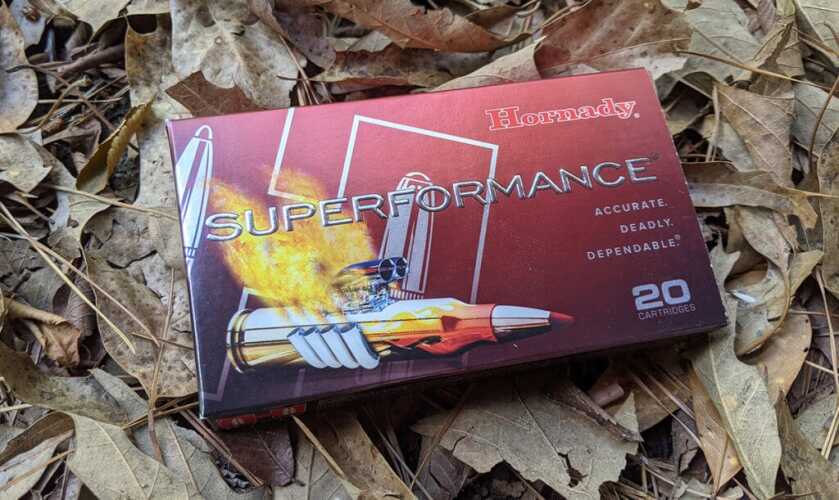
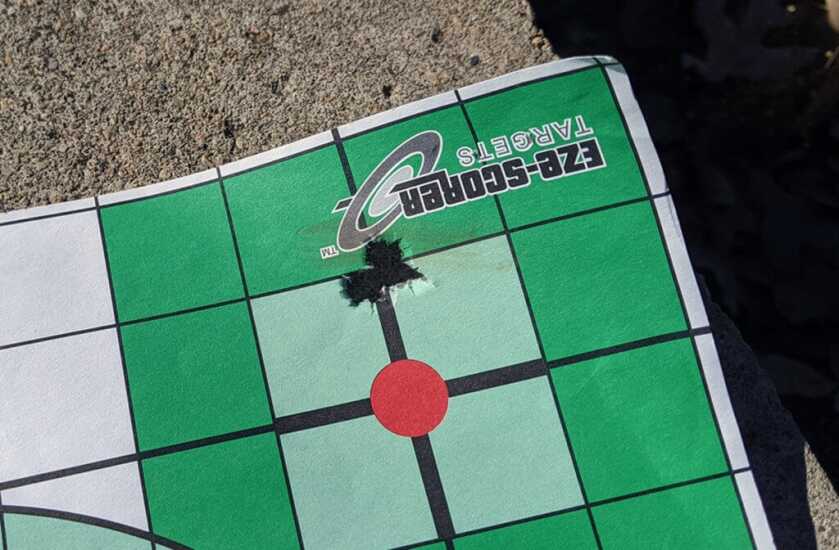
I noticed during that range trip that the removable Radial Brake that comes with the gun blasts sand and dirt in all directions when shooting from the prone position. For a single shot on a whitetail, that’s not a problem. But over an extended range session, I found my bag, clothes, and scope coated in a fine layer of Texas red dirt. It’s not a huge deal, but it’s something to keep in mind.
The next morning, I got up, grabbed the Waypoint, and headed out to the field. Carrying the Waypoint feels both familiar and unfamiliar. The Waypoint model I received cuts weight using an AG Composites carbon fiber stock and a BSF barrel jacketed in a roll-wrapped carbon fiber sleeve. This carbon fiber technology is what allows the Waypoint to clock in at a manageable 7 pounds, 8 ounces (the version with the non-adjustable stock saves an additional 12 ounces).
Admittedly, the Waypoint is heavier than some of the ultra-light mountain rifles on the market these days, so your preference will depend on where you plan to hunt. But its weight is comparable to—and even a little lighter than—your classic wood-stock deer rifle. In that way, the Waypoint feels familiar, and you won’t notice much difference in carrying this rifle through the deer woods.
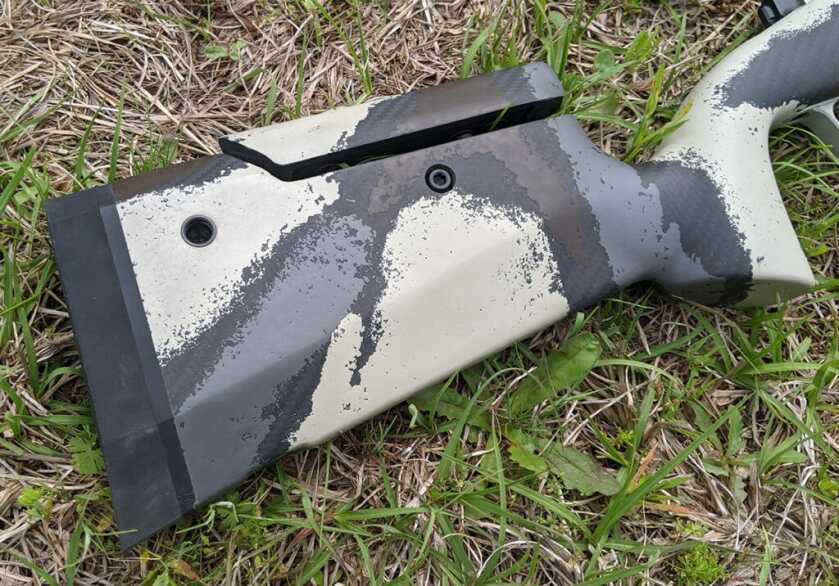
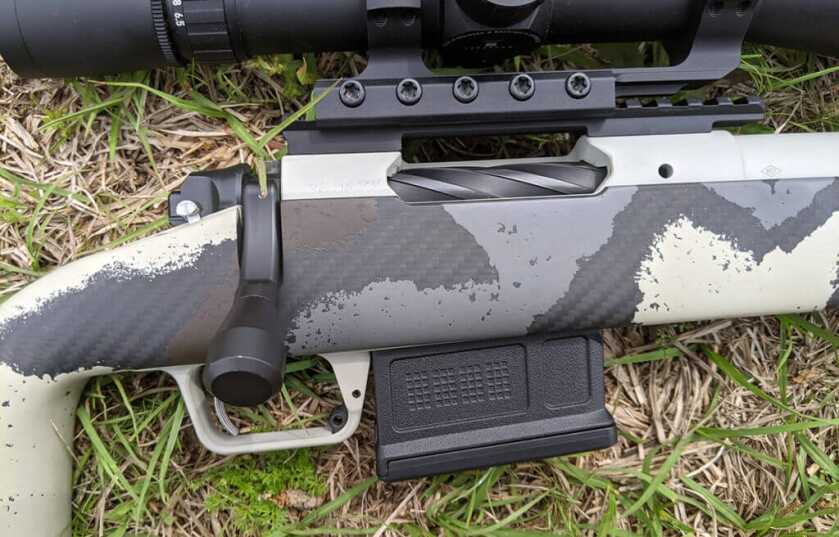
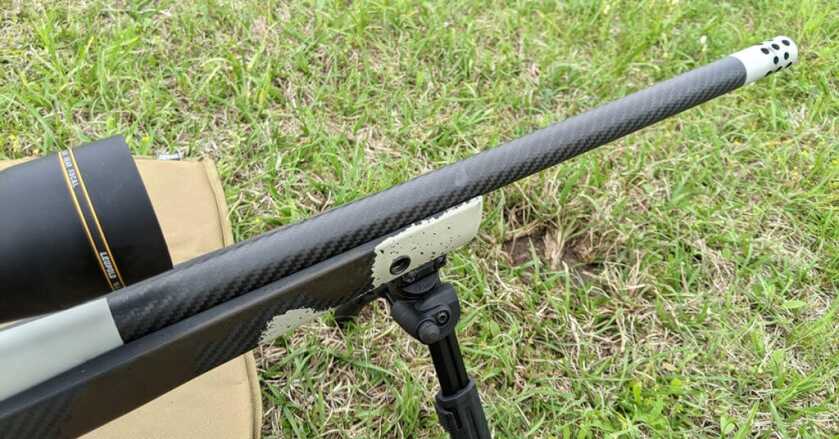
The Waypoint’s tactical profile will be unfamiliar to those used to more traditional designs. The stock is beefier at both the front and the back, and the palm grip swells out like many of the popular target-shooting stock designs. But Springfield does a nice job balancing the tactical and the traditional. The forend is wider and longer, but it maintains the rounded edges necessary in the field. The adjustable stock is handy for proper head-scope alignment, and the grip angle is shallow enough to allow for awkward shooting positions.
I didn’t see any shootable bucks that day. Or the next. Or the next. I was on the last day of my Thanksgiving hunt, but I’d seen deer in the late morning the day before, so I decided to hang out in a high-traffic area a little later than I normally would. Sure enough, around 9:30 a.m., about 70 yards away, out walked the first shootable buck I’d seen.
I’m man enough to admit that buck fever is a real problem for me. Seventy yards is a chip shot, especially for this rifle, but I wasn’t in a great shooting position (sitting, leaning to one side, gun rested on a post), and I only had a small window to shoot between trees and fence posts.
Bang! Hornady’s Superformance ammo combined with the Waypoint’s muzzle brake is no joke. I think my ears are still ringing, but I didn’t notice at the time. All I noticed was the sight of the buck crumpling like he’d been hit with a cement truck.
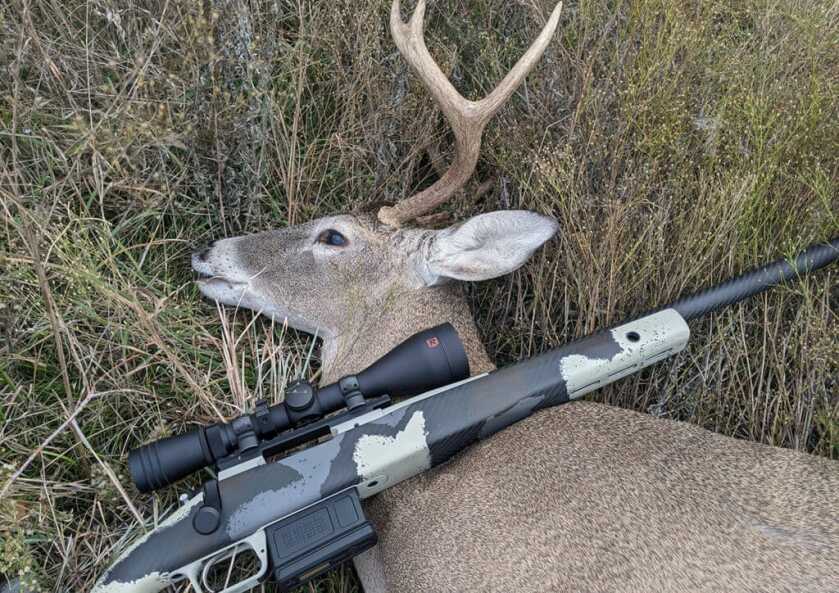
If you’re like me, and you struggle to keep the reticle from jumping with an animal in the crosshairs, the Waypoint includes some features you might appreciate. First, the TriggerTech trigger is absolutely top of the line. It can be adjusted from 2.5-5 pounds and features a patented, free-floating roller for what I think is one of the best breaks I’ve ever felt.
Second, the Waypoint’s lock time is just 1.9 milliseconds. “Lock time” refers to the time between the trigger break and the primer strike. As you can imagine, the shorter the lock time, the more likely you are to hit what you’re aiming at. Springfield claims the Waypoint’s lock time is up to 45% faster than the competition. Frankly, I have no idea if this is true. But 1.9 milliseconds isn’t a long time, and I was glad on my whitetail hunt that the rifle went bang as soon as I pulled the trigger.
At the Range
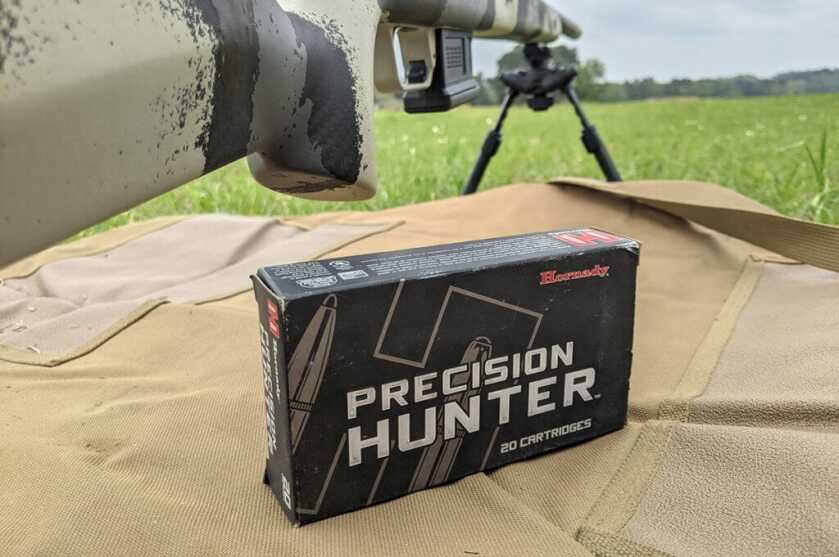
I was happy with my buck, but a 70-yard shot is hardly a true test of the Waypoint’s capabilities. Not having access to any long-range hunting opportunities, I did the next best thing.
Most competitive shooters wouldn’t consider a 700-yard shot “long-range,” but it’s a healthy distance in any hunting scenario. I’d even argue that the vast majority of hunters should try to get much closer before pulling the trigger on a living creature. But I wanted to know: if presented with an opportunity on a large game animal at 700 yards, could I make a shot with the Waypoint?
I headed down to Texas Tactical Training Center to find out. I started by doing more accuracy testing to determine which of the 6.5 Creedmoor loads the rifle liked best. It shoots everything sub-MOA, but it seemed to prefer Hornady’s 143-grain ELD-X Precision Hunter loads over their Hornady’s 147-grain ELD Match and their 140-grain HTBT American Gunner. I only shot one five-shot group with each load, but the 0.55” Precision Hunter group was the best.
That was my first day at TTTC, and the wind was gusting between 5-20mph. It wasn’t an ideal situation, but hunting scenarios rarely are. I walked over to the long-range targets and got down in the prone position using a Magpul bipod and a rear bag.
I had already swapped the Redfield scope for a Leupold Vx-3i 6.5-20x LRP (a good decision), and I could see the 12-inch plate standing 720 yards away with the help of Vortex’s new Fury AB range-finding binoculars (be watching for a full review on those soon!). My goal was to land the first shot at the 700-yard target within the vital area of an elk (about 18”). If I could get closer to my point of aim, even better.

The wind was coming from 10:30, so I wasn’t dealing with a cross breeze. I dialed for bullet drop, aimed at the center of the target, and pulled the trigger.
Dong. I saw the plate move before I heard the sound, and my shot had landed about four inches to the right of where I’d been aiming (I should have accounted more for the wind). That first shot wouldn’t have won me any shooting competitions, but it almost certainly would have bagged me an elk.
I put three more shots down range without changing my point of aim to see what kind of group the rifle could produce. Impressively, those three shots all landed within about 3.5 inches of the first shot, a legitimate half-MOA group at over 700 yards.

Last Shots
The Model 2020 Waypoint isn’t the perfect high-mountain rifle. It weighs more than some hunting rigs, and it costs more than budget-friendly deer rifles. But if you’re looking for one rifle that does it all, you can’t ignore Springfield’s first bolt-action offering.
Lightweight rifles are great in the mountains, but they’re uncomfortable to shoot beyond three or four rounds. Heavy competition rifles are ideal for long-range work, but you wouldn’t bring one to the deer stand. The Waypoint can transition between applications as well as any rifle on the market. It can excel in the field in both short-range and long-range scenarios. It’s super-accurate and loaded with enough features to compete in precision rifle competitions, and it’s comfortable to shoot during extended range sessions.
It costs a pretty penny ($1,699-$2,399 MSRP), but if you’re looking to make a custom-rifle investment without spending custom-rifle dollars, give the Waypoint a look.
Specifications of model tested:
CALIBER: 6.5 Creedmoor
COLOR: Ridgeline Camo
BARREL: 22″ Carbon Fiber, 1:8, Desert Verde Cerakote® H-256P
RECEIVER: Model 2020 Stainless Steel, Desert Verde Cerakote® H-256P
OPTIC MOUNTING: Picatinny Mount, Rem 700 SA Pattern, 6-48 Screws
BOLT: Fluted 4140 Tool Steel, Nitride
STOCK: Hybrid Profile, Adjustable Carbon Fiber, M-Lok®
TRIGGER: TriggerTech Adjustable, 2.5 – 5 lbs
MUZZLE DEVICE: SA Radial Brake, Desert Verde Cerakote® H-256P
MAGAZINES: (1) 5-Round, AICS Short Action
WEIGHT: 7 lbs 8 oz
LENGTH: 43.5″
MSRP: $2,399
A Few More Pics
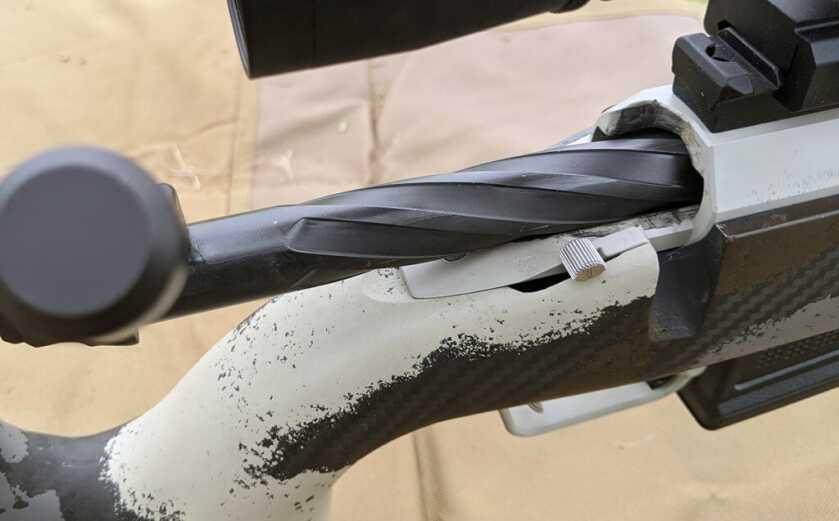
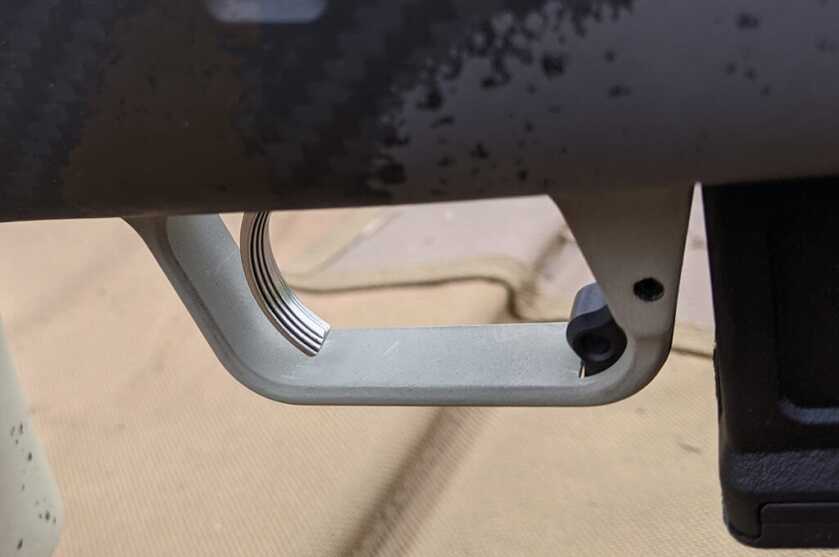
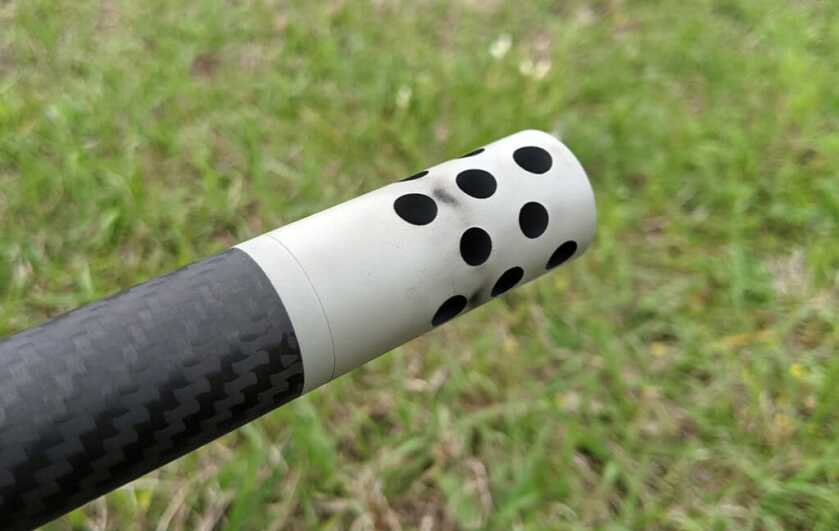


Good article. I like the accuracy and I have had good luck with several Springfield products. That being said I just can’t warm up to a carbon wrapped barrel, no matter who makes it. Is there any plans to come out with a conventional barrel and in other calibers, 280 AI, 300 Win Mag etc. I don’t mind the extra weight.
Nice but looks like another copy of an FN SPR A5M, or McMillan model 70 or similar Christensen with the 6.5×50 Jap 6.5×55 sweed “wanna-be” bullet weight variant 6.5 Sleezemore or 6.5 Dis-grundtled…lol… nothing “new” just the next number covid 25…
Tool steel is used in machine tools, hammers and jackhammers why would it not hold up the cartridge firing? Educate us genius.
Chief,
Wow…………………… going on the defense. Maybe you should change your mane to Thumb Sucker or Bed Wetter, because here is the wrong place to have feelings. After conducting my own research this is what I found at http://www.toolsteel.com/products/4140
AISI 4140 grade is a low-alloy steel that contains chromium and molybdenum that act as a strengthening agent. It is a versatile alloy steel that has a good combination of strength, toughness, corrosion resistance, and wear resistance.
4140 is not tool steel, it’s a chrome moly steel used in most premium barrels, tool steel would be too hard and brittle to take the beating of a rifle bolt.
“BOLT Fluted 4140 Tool Steel, Nitride” is straight from Springfield’s website so take it up with them. There is always some wise-a_s with nothing better do to than critique the article. Go ahead and include a link to your articles Jack-a_s and we’ll let YOU know what WE think.